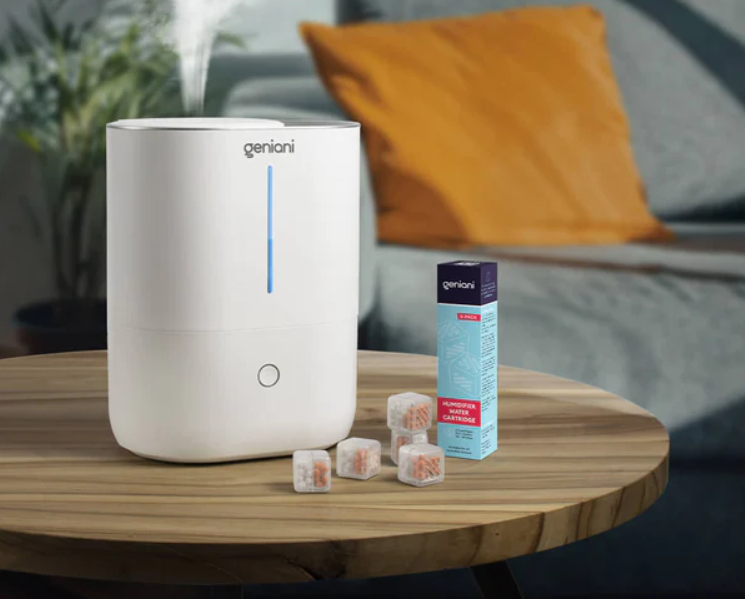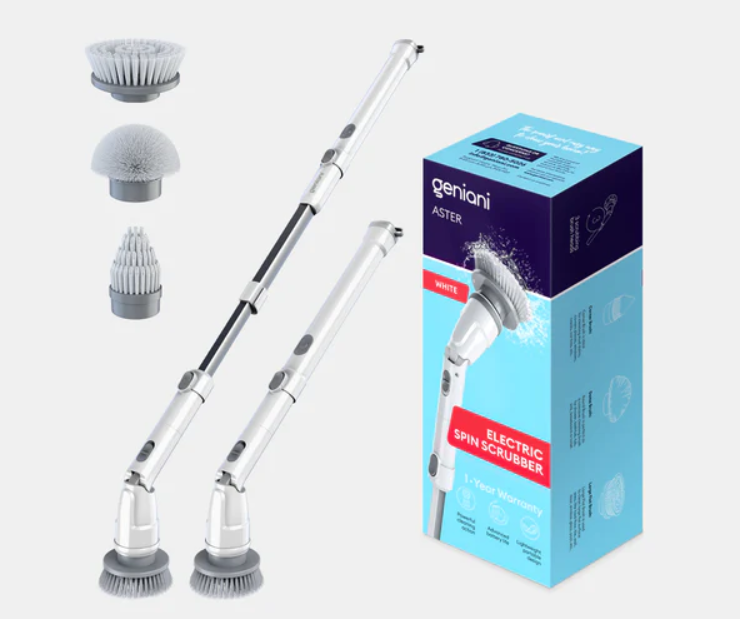What is an air purifier
Air purifiers are quite self-explanatory: these are the items that clean the air around by trapping airborne contaminants and pollutants. They are designed to filter out dust, smoke, pollutants, mold, and allergens, etc. leaving a fresh environment around. The types of air purifiers vary according to the technology used for capturing different pollutants.
Their use has become mainstream over the recent years and it’s not in vain. The research shows that breathing slightly polluted air for 10 years is equal to smoking a pack of cigarettes for 29 years. So, if you live in a city, the chances are big enough that you’re a passive smoker. In order to prevent lung diseases, people purchase air purifiers.
Also, the fact that indoor air can be five times as polluted as outdoor one induces people to get air purifiers for their homes. Do air purifiers help with allergies? Well, they are claimed to help alleviate allergies, fight their triggers, and decrease significantly sustained symptoms. Moreover, nowadays, it’s even mentioned as a tool to prevent Coronavirus penetration into a house.
What does the air purifier do

The best air purifier
We dared to create our own abbreviation that is easy to remember and reflects the purpose of an air purifier. It’s CCD, or Captures, Cleans, Care. Again, as we’ve mentioned before, it’s all about the technology used in the unit. This fact brings up to the point of what filters are used in air purifiers.
Hepa filters
The most popular filter is HEPA. It traps 99.97% of all air pollutants up to 0.03 microns. This type uses technologies that do not allow bacteria and viruses to multiply. HEPAs are easy to maintain. However, most manufacturers create air purifiers with a combination of different filters, such as Advanced Carbon Filter, HEPA, and UV light.
Ozone generators
They are used mostly in hotels to trap odors. Additionally, they release ozone, which leads to respiratory issues. To prevent that, the hotel service staff leaves the room vacated for about 24 hours. They are not convenient for everyday residential use, though.
Ultraviolet light air purifiers
Such devices use UV lights to go through the cell’s structure, irrevocably destroying it and stopping its proliferation. That way, these air purifiers do not catch pollutants but rather kill them.
Activated carbon
It is rather good at trapping chemicals, odors, and off-gassing than pollutants like viruses. Their technology lies in heating a highly porous form of carbon to augment its surface area and capture the contaminants.
How does an air purifier work

How does an air purifier work
Air purifiers for the house include a filter, or a few ones, and a fan that pulls in and stirs the air. While air passes through the filter, pollutants and particles are trapped, and the clean air is pushed back out into the room. Traditionally, filters are made of fiber, paper, or mesh and need timely replacement to keep working efficiently. When considering purchasing an air purifier, take into account operating costs and filter replacement costs. The first type can amount to $50 a year as you should be using it almost nonstop to get all the benefits. The second type of cost is estimated at approximately $100 a year.
How often to change filters in air purifiers depends on the unit’s type and usage. Some filters are reusable and washable but they demand scrupulous maintenance. You won’t find them on the most powerful air purifiers. Reusable filters do a greater job of eliminating larger particles from the air, such as dust mites or pollen.
Other units use ionizers to draw particles like static ones. Here’s a good answer to the question “Do air purifiers help with allergies?” Negative ions attach to dust and allergens and make them fall from the air. If you’re interested in purchasing this type of air cleaners, make sure it does not generate ozone. But usually, this is indicated on the packaging.
Air purifier benefits

An air purifier with true HEPA filters
In general, the purpose of an air purifier is to reduce asthma and allergy triggers, block contamination of killer substances, and so on. It can be beneficial in commercial and residential spaces, including offices, hospitals, schools, etc. Before diving into the benefits, let’s outline two core points you get the most of an air purifier. First, HEPA filters need to be replaced regularly. According to the Environmental Protection Agency, you should replace it every three months for optimal usability. Also, to garner all the benefits, you should run the unit almost nonstop. Second, if placing it in a room, make sure it’s at least 6 to 100 feet from the bed. If putting closer, you won’t experience the utmost benefits of clean air. Now, let’s check out the benefits you can get from using it at home or work.
Removal of triggers that provoke asthma
Asthma triggers might be found anywhere. These are dry skin cells, dust, dirt, any sprays, household cleaners, any kind of smoke, paint products, cosmetics, fragrance, etc. At work, you can start suffocating from mold spores or cockroaches. New carpets can provoke the symptoms as they release fumes. If not removed but inhaled, all these triggers can cause wheezing. What’s more, tiny airborne particles are the most dangerous. This is where air purifiers for the house come in handy. They are good at eliminating microscopic impurities. Improving airflow and using the HEPA filter will also decrease indoor air pollution, thus lessening the odds of triggering asthma symptoms.
Preventing lung disease
Breathing in tobacco smoke can lead to the development of chronic obstructive pulmonary disease and heart one. Other outcomes might be ear infections, pneumonia, asthma, and bronchitis. Secondhand smoke is especially dangerous for kids as their lungs are still developing and their respiratory rates are higher than an adult’s. However, the elderly ones are more likely to get dementia if they often breathe in secondhand smoke. This is where HEPA filters and activated carbon do a great job of drawing and encasing smoke.
Fighting allergens like dust and pet odor
An air purifier for every pet owner
When you breathe in pet odor, pollen, dust, your body responds by producing IgE, the allergen antibody. This provokes allergic reactions. Do air purifiers help with allergies? We recommend getting an air purifier that removes the allergens without producing ozone to counteract the reactions.
Eliminating radon gas
Lung cancer is not a joke. Did you know that certain gases contribute to that? Radon gas, for example, is the reason for 15,000-22,000 lung cancer deaths each year. It can be present in homes, offices, schools, and penetrate through cracks in the walls and floors, construction joints or gaps near electrical wires, pipes, sump pits, and so on. Everyone is vulnerable to being contaminated by radon gas, and if its level is too high in a building, fatal results might happen. That’s why one of the recommendations here is using an air purifier that can suck the gas and remove it from the spaces.
Removing outside fumes and pollutants
The residents of big cities and those living near highways and other urban areas are more likely to have allergic diseases. The reason is the presence of the pollutants in these locations. The high air pollution from outside sources includes ozone, nitrogen dioxide, sulfur dioxide, etc. Each can cause asthma and allergies. Well-ventilated spaces are the best way to fight pollution inside and outside the house. The purpose of an air purifier is also to reduce outside pollution. So, besides installing a reliable ventilation system, you can ventilate your living spaces with it.
Eliminating volatile organic compounds
VOCs are gases from certain solids and liquids. They include chemicals that have short- or long-term menacing health effects. Their concentration is higher indoors than outdoors in most cases. VOCs are present on paints, coatings for walls and furnishings, even clothes after dry-cleaning, stored fuels, air fresheners, sprays, auto products, etc. How can you tell you have VOCs in your home? The symptoms are watering eyes, breathing issues, nausea, burning, or choking in the throat. To fight them, use an air purifier that removes the vapors from your rooms and keep them in its isolated unit.
Removing hostile insects
Insects can pass on germs and even diseases. People usually use sprays that kill insects and, in the meantime, release toxins into the air. However, mosquitoes, for example, do not often die from such toxins and bring serious diseases such as malaria. Although insecticides can fight insects, air purifiers are more helpful and effective. They lessen the odds of getting malaria infection as they annihilate bugs that pass these viruses on. Air purifiers for the house are a better solution here.
Reducing stress and favoring quality sleep
How to improve your sleep with an air purifier
People breathing in less polluted air are less likely to stress out. There’s scientific proof for that. When you inhale clean air, your cortisol levels decrease and you feel less anxious and stressed out. Besides, knowing that your space is free of pollutants will give you peace of mind – just one less thing to worry about. As for sleep, you’ll agree that contaminated air disturbs healthy sleep, making you feel uncomfortable. Additionally, air purifiers produce a calming and soft sound humming you to sleep. Most people find it relaxing enough to fall asleep.
What is an air purifier used for
The fundamental purpose of an air purifier is to circulate the air in a living space and clean it by eliminating particles and airborne substances. Usually, they remove bothersome and offensive particles like hair, vapors, odors, and more to produce clean air in the home. Their core value is to prevent sickness and allergy symptoms. So, we’ll gladly re-outline what it is used for and provide the points from another angle, giving you pretty enough reasons to get it for your space.
Removing odors
If you avoid cooking fried fish or burgers or spicy meals because of the smell afterward, now you have a solution. Also, cleaning solvents releasing VOCs can release strong and potentially dangerous odors. Add to this list pets, garbage, musty areas, and even a new carpet with short-lasting “outgassing” properties. Luckily, the activated carbon filter is the right thing to address such issues. It absorbs and captures these odors and vapors, leaving fresh air instead.
Alleviating allergies

Great air purifier to cope with allergens
Allergy symptoms, such as sneezing, itchiness, asthma, might be the result of allergens. In most cases, the latter relates to dust mites feeding off pets’ dander and human skin waste. If not removed, they settle on surfaces and get into the air repeatedly, creating a vicious cycle. The air purifiers for the house with the HEPA filter do a great job here as they filter out up to 0.03 microns particles. Plus, there are a lot of allergens that are big enough to trap easily.
Dealing with smoke
Smoke is way more than we see. It’s about toxic elements and gases, chemical compounds that get everywhere and settle on surfaces. It causes health hazards and discolors surfaces. The models with the HEPA filters and activated carbon can help by trapping current particles or the remnants. Smoke particles are so tiny that it’s better to avoid direct exposure to it. If it’s impossible, the best solution to fight direct smoke or its side effects is to make an air purifier run permanently.
Controlling dust
Do you have any fabrics, home materials, or the heating, cooling, and ventilation systems? We bet you do! So, you definitely have dust in your home as its tiny particles enter and break from those things. The good news is that air purifiers cycle the air in a room and filter out these particles. Their pre-filters already do a great job of trapping the usually bigger particles than most air contaminants. So, this way, you can control dust and even stop sneezing in the long run.
Eliminating pet odors and dander
A great air purifier for every pet owner
We love pets, but here’s the truth – they generate by-products, such as hair, odors, dander, and take in substances from outside. As mentioned earlier, this triggers allergy symptoms. Besides, there’s such a phenomenon as a “wet dog smell” provoked by mycobacteria. It is activated when hair is full of water. Air purifiers for the house cannot wholly remove pet hair from indoors but airborne hair can be captured. As for odors and natural oils on the pets’ skin, they do a great job here as well.
What are other ways to improve the air quality in my home
The ultimate advice is to tackle the source of indoor air pollution and have a great airing in the living space. To supplement your air purifier’s work, you can follow the steps below to reduce indoor air pollutants:
- Ventilate traditionally by keeping the windows open, preferably – on opposite sides of the living space to create a cross draft. By doing so, you prevent locking irritants into rooms.
- Vacuum regularly with a cleaner that is sealed, comes with a bag, and HEPA-certified.
- Replace air filters regularly to maintain HVAC equipment and increase performance.
- Turn on an exhaust fan when cooking or having a bath and leave it running for a few minutes after you’ve done.
- Keep to a minimum the use of candles or burning wood fires and forbid smoking inside the home. Reducing the sources of pollutants is a definite way to improve air quality.
FAQs about air purifiers
There are all interesting questions about air purifiers you need to know.
How to check if my air purifier is functioning
Here are the ways to check whether your air purifier works:
- Check the unit’s internal filter indicator. It signals when the air filter has overpassed its capacity and needs replacement. Pay attention to the lights as they are different for different performance levels.
- From time to time, examine it manually, especially when you notice the air purifier is not working at total capacity. The air purifier should have enough waste to signal it is working, but not so much that it’s fully plugged. If the HEPA filter is too clogged, you should get it changed.
- Additionally, install a separate device known as an air quality monitor actually to track the quality of air in your living space. It can tell you how well the air purifier does its job.
What is the proper place to place an air purifier
The right place for an air purifier
When thinking of the right place for your air purifier, keep in mind the following tips:
- Place it where you spend most of your time.
- If it’s not in your room, make sure it is at least 6 to 10 feet from your bed. If it’s up to 6 feet, you might notice a draft from the air circulation. Placing further than 10 feet, you won’t see the maximum benefits of the device.
- Bathrooms and kitchens are also the right places to install the device since they are more likely to receive more pollutants.
- If you have the elderly or babies in your home, it makes sense to place the air purifier in the nursery, kid’s, or the elderly’s room.
- If there are smokers in your family, place the air purifier right in the room where they smoke.
- If you cannot decide on any concrete room, you can purchase a complete home purifier that couples with your air ducts and purifies your whole home.
- The appliance’s proper location is in the middle of the room without anything that can block the airflow. Most people don’t like the objects in the middle of the room because of the tripping hazards and the unattractive look of the whole design. In this case, purchase a 360-degree filtration purifier and install it 6 inches from the wall.
- If you have kids around, consider placing it on a sturdy table. Check the instruction manual to look for an optimal recommendation.
Should I leave the air purifier working the entire night
Yes, it is absolutely possible to sleep with the device all night. The primary purpose of an air purifier is to filter the air and clean it. You definitely ought to leave it working nonstop for the best air quality. Besides, it contributes to good sleep.
Does the air become dry because of it
Air purifiers only catch airborne pollutants and contribute to fresh air circulation without drying out the air or affecting in any way the humidity in the room. If the latter is the cause of your concern, get a humidifier for your home.
How much time does it take for a device to purify a room
Greatest air purifier for home
There are a lot of aspects that define how long it takes to clean the room. These are the room’s size, the appliance’s size, CADR and ACH ratings, capacity, fan speed. But usually, it takes from 30 to 2 hours.
How many air purifiers do I need if I have 4 rooms
One air purifier per room is enough. But make sure that it is rated for the room’s size. Its capacity should be able to handle the room wider than yours. Learn the CADR rating to ensure that it can purify your room efficiently.
Do air purifiers help with allergies
Absolutely! As mentioned above, they help prevent allergy symptoms, alleviate existing ones, and even help treat them in the long run. Herewith, it is crucial to understand which one of the filters is convenient for your particular case. Please check the information on different types of filters and their target pollutants above to make the right choice.
Can I become sick because of using it at home
Air purifiers are really perfect devices and can help to cope with respiratory diseases and asthma. They are made instead to improve general health than lead to illness. However, common sense and caution are the best recommendations when using any device. If you misuse it or use the wrong one, you can deteriorate your health issues. Also, keep in mind the following tips:
- Keep it working all day, If turning off will make the air quickly get polluted.
- Some air purifiers release ozone that leads to breathing issues, throat inflammation, or other respiratory ailments.
- Stick to your household cleaning routines even when the device is working.
- Replace filters regularly as over time they accumulate germs, bacteria, and start releasing them into the environment.
- When surveying models, avoid “HEPA-style” or “HEPA-type” – they do not have a legal definition and are ineffective in cleaning. Instead, look for a “true HEPA filter” purifier and check its CADR rating.
Do air purifiers remove awful odors
The appliances with an activated carbon filter are more effective when it’s about cleaning from smoke, odors, and VOCs. In general, these are the fans that draw pollutants into filters and release way cleaner air than the one gone in.
Is it cost-intensive to maintain air purifiers
The operational cost can be different. Everything depends on the model, type of filter, and the airflow speed. Traditionally, a HEPA air purifier consumes 50-100W per hour. If you use it, for example, for 10 hours a day, you might have an annual operational expense from $30 to $60. If you run it around-the-clock, the yearly operating cost is about $72-$120.
Air purifiers for the house: the final word
To make an informed purchase, make sure you know your situation and your “why”. Do you have allergy symptoms, respiratory issues? Or, you have a newborn and need to clean the air in the nursery. Next, pay attention to the filters. If there are smokers around, make sure your air purifier has an activated carbon filter. Do you want to become a home expert on the subject to take care of your beloved one even more effectively? Check our “How to choose an air purifier for home: tips and advice”.








